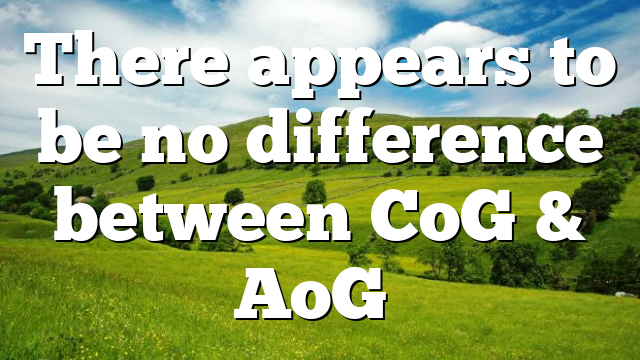Click to join the conversation with over 500,000 Pentecostal believers and scholars
Click to get our FREE MOBILE APP and stay connected
Melvin Harter | PentecostalTheology.com



There appears to be no difference between CoG & AoG in their theology any more even though the CoG came from the Holiness Movement, whereas the AoG came from the Calvinistic Movement. Many ministers switch from one denomination to the other. For example, if you were divorced and remarried, you join the CoG. If you want to build a local church without outside interference, you join the AoG. Regarding any holiness standards in the CoG, like the AoG, there are none.




Charles Page
aren’t you painting with a broad brush here?
Melvin Harter
I am like yourself. I preach a lot in CoG and some independent Pentecostal-holiness type of churches. Outside of that, I do something that I thoroughly enjoy, and that is, conducting gospel tent crusades that will go every night for several weeks.
J. Stephen Conn
And if you are scripturally divorced and remarried as well as wanting to build a local church without outside interference, you join the Southern Baptist Convention.
Pat Fretwell
I totally disagree with your statement on holiness. I’m COG & know many that live holy lives. We have a great leader, Dr. Mark Williams. One in a million. A very humble man. We came from the AG yrs ago. I’d like to think there r still ones that love God. Don’t really know much anymore.
Wahyu
My understanding was the aog came from the same Christian union as the cog
Melvin Harter
AoG came from the Baptist Church and the CoG came from the Holiness Church. Two totally separate and distinct beliefs.
Charles Page
The Church of God came from a local Baptist Church in Tellico Plains. The Church was an informal extension of the hands of the elders at Holly Springs Baptist. They set forth and ordained the elder Richard Spurling, Sr. It became a Christian Union and later a Holiness Church.
James T Guyton
The theological view of sanctification is quite a variance.
Melvin Harter
I understood Spurling was kicked out of the Baptist due to his holiness view. Then the 3 laymen came and held a holiness revival. The church became known as the Holiness Church at Camp Creek. In 1906, the church changed its name to CoG. But the entire premise of the Church was based on the holiness precept.
Charles Page
The basis of the union was the fact that R. G. Spurling, Sr. was credentialed as an elder (it is questionable about the expulsion) and the group deferred to him for the purpose of ordaining a pastor.
In my opinion if R. G. Spurling, Jr. himself had assumed upon himself eldership then it would have been a clean break.
Otherwise it is a Baptist group seeking a closer walk with God in a union of sincere believers. Probably what distinguished them from the Baptist was their view of smoking which does not make one “Holiness” Perhaps there was an arrogance of the group connected with the great zeal they had that offended the Baptist.
They were not yet divided doctrinal and that came with the embracing of Wesleyan Holiness.
“The theological view of sanctification is quite a variance.” agree
Rick Wadholm Jr
The AoG was a mixture of various groups both independent and affiliated. The largest affiliated portion in 1914 appear to have come from the Church of God in Christ. There were certainly leading voices early on of Baptistic influence, but it was not a Baptist born Fellowship. In fact, the first official statement of faith in 1916 reads as if the AoG allowed both Wesleyan-Holiness and Finished Work beliefs concerning sanctification. It wasn’t until later that this statement was reworked to point toward a form of Finished Work.
Also, for whatever it is worth, there is a CoG minister doing his PhD with me who is writing on Sanctification in early Pentecostalisms.
Rick Wadholm Jr
Mark Bales, while I have often found what you are saying to be true on the popular level, there are still pockets of folks adamant on the distinctions and upholding them fervently. Officially on paper we remain distinct as to our theological confessions of sanctification, but in practice there is less and less distinction in my experience. I say all of this as a highly sympathizing Wesleyan-Holiness influenced AoG minister and professor. I have been influenced by John Wesley’s writings, but more particularly those of several Pentecostal theologians: Steven Land and John Christopher Thomas.
Melvin Harter
The early Pentecostals wanted the movement to be united as one. However, the pre-AoG people could not go along with Entire Sanctification and therefore the Pentecostals were permanently divided until 1986. The pre-AoG only took ministerial credentials with the CoGiC. Outside of that, there was no fellowship. The fact is, segregation was strongly adhered to of that era of time; therefore, there was no fellowship between the whites and blacks. The pre-AoG took credentials, then surrendered them; and then a second time they took credentials once again and again later surrendered them just prior to their organizational structure in Hot Springs in 1914.
Charles Page
Were the followers of Mason in Memphis (CoGIC) Wesleyan?
Melvin Harter
Most definitely Charles Page. CH Mason was a strong promoter of Entire Sanctification.
Melvin Harter
It is interesting to read some of the old sermons of that day.
Charles Page
no better preaching than G. E. Patterson!!!